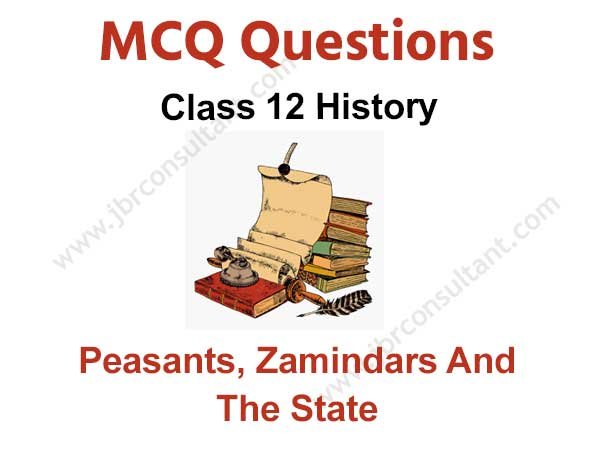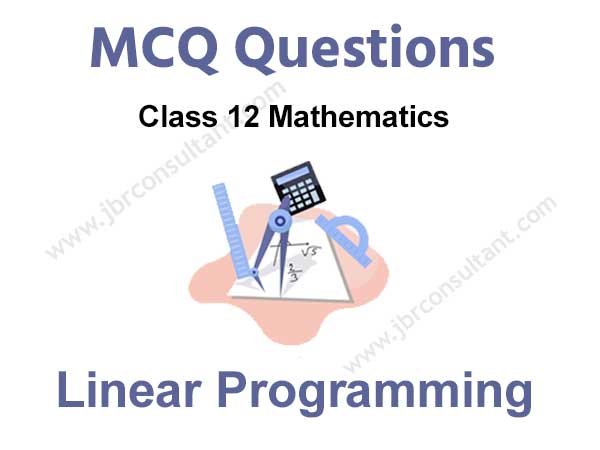Peasants Zamindars And The State Class 12 MCQ is one of the best strategies to prepare for the CBSE Class 12 Board exam. If you want to complete a grasp concept or work on one’s score, there is no method except constant practice. Students can improve their speed and accuracy by doing more MCQ on Peasants Zamindars And The Stateclass 12, which will help them all through their board test.
Peasants Zamindars And The State Class 12 MCQ Questions with Answer
Class 12 History MCQ with answers are given here to chapter 8 Peasants Zamindars And The State. These MCQs are based on the latest CBSE board syllabus and relate to the latest Class 12 History syllabus. By Solving these Class 12 MCQs, you will be able to analyze all of the concepts quickly in the chapter and get ready for the Class 12 Annual exam.
Learn Class 12 Peasants Zamindars And The State MCQs with answers pdf free download according to the latest CBSE and NCERT syllabus. Students should prepare for the examination by solving CBSE Class 12 History Peasants Zamindars And The State MCQ with answers given below.
Question 1: Who wrote Ain-i-Akbari?
(a) Abul Fazal
(b) Al-Biruni
(c) Ibn Battuta
(d) Abdur Razzaq
Answer
A
Question 2: ______ was an important Jins-i-Kamil of Central India.
(a) Cotton
(b) Sugarcane
(c) Oil Seeds
(d) All of these
Answer
D
Question 3: The Zamindars had huge lands called _____.
(a) Milkiyat
(b) Zamin
(c) Grih
(d) Bhumi
Answer
A
Question 4: What was the village headman called?
(a) Muqaddam
(b) Asarrii
(c) Muzarian
(d) Riaya
Answer
A
Question 5: In 18th century, women zamindars were known in
(a) Bengal.
(b) Rajasthan.
(c) Punjab.
(d) Gujarat.
Answer
A
Question 6: Which of the following crops was banned by Jahangir?
(a) Betel leaf
(b) Chillies
(c) Tobacco
(d) Maize
Answer
C
Question 7: In the third battle of Panipat, the Marathas were defeated by
(a) Ahmad Shah Abdali.
(b) Nadir Shah.
(c) Sher Shah.
(d) Bahadur Shah II.
Answer
A
Question 8: What was the basic unit of agricultural society?
(a) State
(b) City
(c) Town
(d) Village
Answer
D
Question 9: Ottoman empire belonged to
(a) China
(b) Iran
(c) Turkey
(d) Iraq
Answer
C
Question 10: Akbar’s “auspicious sayings” were included in
(a) First book of Ain.
(b) Second book of Ain.
(c) Third book of Ain.
(d) Fifth book of Ain.
Answer
D
Question 11: With which of the following methods, Zamindari consolidation was done in the Mughal period?
(a) Colonisation of new lands
(b) By transfer of rights
(c) With the order of the State
(d) All of these
Answer
D
Question 12: Which of these was a major reason for the higher status of Zamindars in the Mughal empire?
(a) They had a very high income.
(b) They had extensive personal land.
(c) Most of the time, they belonged to upper castes.
(d) All of these.
Answer
D
Question 13: Which of the following is correct meaning of Jins-i-Kamil?
(a) Perfect corps
(b) Perfect crops
(c) Perfect Sepoy
(d) Perfect administrator
Answer
B
Question 14: Which of the following crops were considered as jins-i-Kamil?
(a) Cotton and sugarcane
(b) Maize and sugarcane
(c) Rice and wheat
(d) Chillies and potatoes
Answer
A
Question 15: Ahom kings belonged to
(a) Madhya Pradesh
(b) Andhra Pradesh
(c) Orissa
(d) Assam
Answer
D
Question 16: _____ coins were more prevalent during the Mughal Empire.
(a) Gold
(b) Copper
(c) Tin
(d) Silver
Answer
D
Question 17: Who was the author of Ain-I Akbari?
(a) Al-Biruni
(b) Abul Fazl
(c) Rahim
(d) Fakir Aziao-Din
Answer
B
Whoever needs to take the CBSE Class 12 Board Exam should look at this MCQ. To the Students who will show up in CBSE Class 12 History Board Exams, It is suggested to practice more and more questions. Aside from the sample paper you more likely had solved. These Peasants Zamindars And The State Class 12 MCQ are ready by the subject specialists themselves.
Question 18: There are _______ daftars (parts) of Ain.
(a) Three
(b) Four
(c) Five
(d) Six
Answer
C
Question 19: Find out from the following pairs which one is not correctly matched:
(a) Kharif : Autumn
(b) Rabi : Spring
(c) Makka : Maize
(d) Muqaddam : Labourer
Answer
D
Question 20: What does the third part of Ain, ‘Mulk-Abadi’ deal with?
(a) Social Sicde of the empire
(b) Fiscal side of the empire
(c) Administrative side of the empire
(d) None of the above
Answer
B
Question 21: During the Mughal Empire, what was Jins-i-Kamil?
(a) Half crop
(b) Perfect crop
(c) Rabi crop
(d) Kharif crop
Answer
B
Question 22: Vegetables like tomatoes, potatoes and chillies reached India from the
(a) Continental World.
(b) Middle World.
(c) New World.
(d) Old World.
Answer
C
Question 23: During the Mughal Empire, how did the Panchayats use the funds available to it?
(a) It was used to entertain revenue officials.
(b) It was used to pay salary to muqaddam and chowkidar.
(c) It was used to meet expenses for the community welfare.
(d) All of these.
Answer
D
Question 24: The term which Indo-Persian sources of the Mughal period frequently used to denote a peasant was
(a) do-fasla.
(b) khud-kashta.
(c) pahi-kashta.
(d) raiyat.
Answer
D
Question 25: Which of the following Muslim community was considered menial?
(a) Mandal
(b) Halalkhoran
(c) Majur
(d) Jangli
Answer
B
Question 26: Most regions, under the Mughals, produced a minimum of
(a) one crop.
(b) two crops.
(c) three crops.
(d) four crops.
Answer
B
Question 27: Identify which of the metal was used more often to make coins during the Mughal Empire?
(a) Gold
(b) Silver
(c) Tin
(d) Copper
Answer
B
Question 28: What do you understand by the term Khud-Kashta?
(a) Peasants who were residents of the village
(b) Non-resident cultivators
(c) Revenue collectors
(d) Head of jati panchayat
Answer
A
Question 29: Identify which of the following statement is correct about Ain-i-Akbari?
(a) Manzil-Abadi is related to the royal household.
(b) Sipah-Abadi is related to civil and military administration.
(c) Mulk-Abadi gives information about the fiscal aspect of the state.
(d) All of these.
Answer
D
Question 30: _ was the court historian of Akbar.
(a) Al-Biruni
(b) Abul Fazl
(c) Bernier
(d) Ibn-Battuta
Answer
B
Question 31: Which of the following statements regarding the roles played by women in agrarian society is incorrect?
(a) Women sowed, weeded, threshed, and winnowed the harvest.
(b) Women worked shoulder to shoulder with men in fields.
(c) During some days of the month women were not allowed to touch the plough.
(d) Women took the produce to the overseas markets for trade.
Answer
D
Question 32: Which of the following were the duties performed by state officials in the 16th century?
(a) Collection of land revenue
(b) Measuring the land
(c) Keeping the records
(d) All the above
Answer
D
Question 33: There are _ daftars (parts) of Ain.
(a) Three
(b) Four
(c) Five
(d) Six
Answer
C
Question 34: Which of the following crops was introduced into India via Africa and Spain?
(a) Chillies
(b) Maize
(c) Papaya
(d) Tomatoes
Answer
B

You can easily get good marks If you study with the help of Class 12 Peasants Zamindars And The State MCQ. We trust that information provided is useful for you. NCERT Peasants Zamindars And The State Class 12 MCQ PDF Free Download would without a doubt create positive results.
We hope the information shared above in regards to MCQ on Peasants Zamindars And The State Class 12 with Answers has been helpful to you. if you have any questions regarding CBSE Class 12 History Solutions MCQs Pdf, write a comment below and we will get back to you as soon as possible.
Frequently Asked Question (FAQs)
How many MCQ questions are there in Class 12 chapter 8 History?
In Class 12 chapter 8 History, we have provided 34 Important MCQ Questions, But in the future, we will add more MCQs so that you can get good marks in the Class 12 exam.
Can we score good marks in Class 12 History with the help of Peasants Zamindars And The State MCQ Questions?
Yes, MCQ Question is one of the best strategies to make your preparation better for the CBSE Board Exam. It also helps to know the student’s basic understanding of each chapter. So, You can score good marks in the Class 12 History exam.


